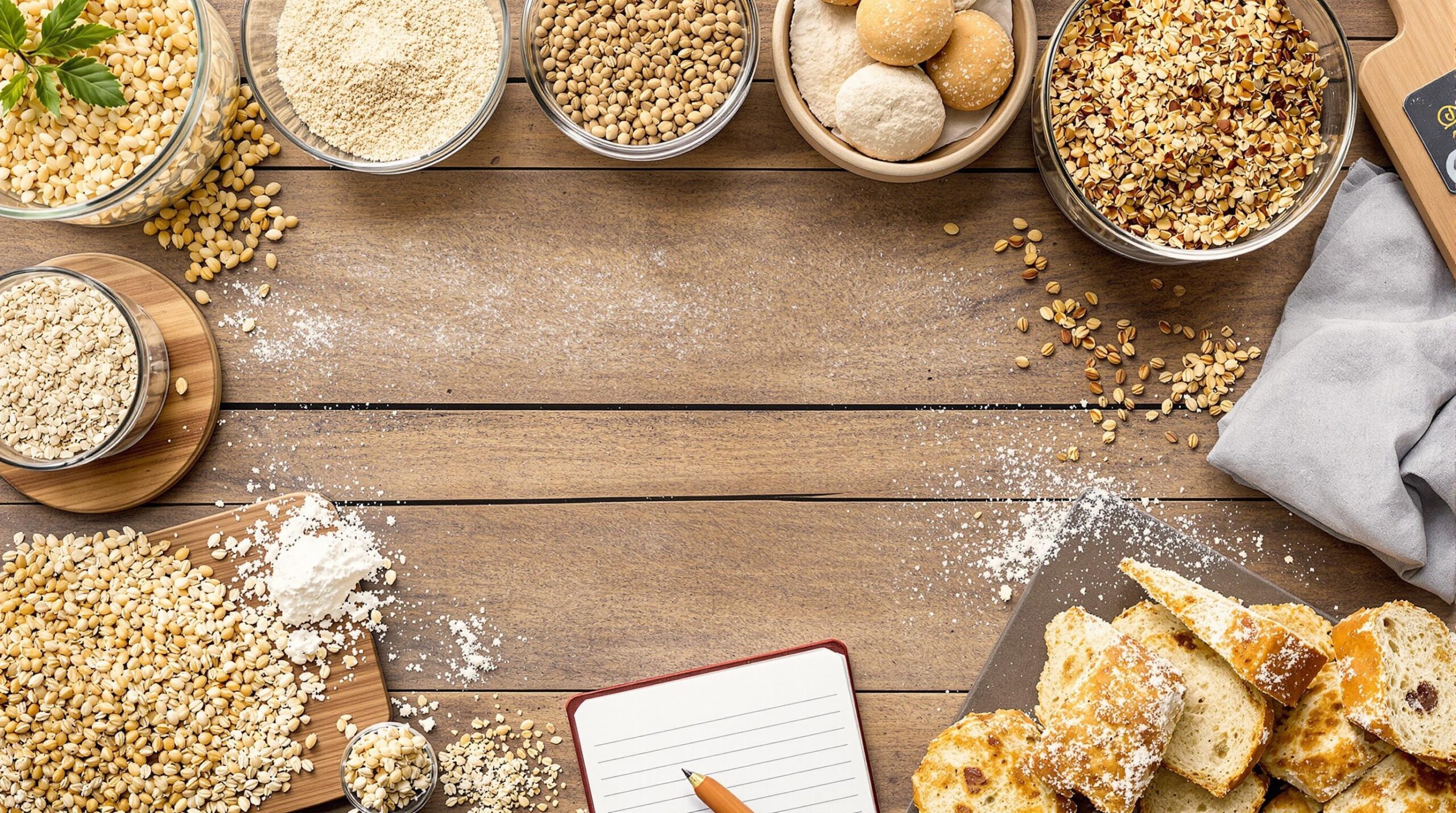The culinary world is turning its attention to ancient grains as innovative solutions for gluten-free baking gain momentum. With their rich history and diverse nutritional profiles, these grains offer new options. They add variety and nutritional benefits to gluten-free diets. As more people today seek alternatives to traditional wheat-based products, ancient grains are stepping into the spotlight.
The Importance of Gluten-Free Alternatives
Many individuals seek gluten-free options due to celiac disease, gluten intolerance, or health. A gluten-free diet eliminates traditional wheat, barley, and rye, which contain gluten. However, one common misconception is that gluten-free diets lack essential nutrients. Ancient grains dispel this myth by offering a nutrient-rich alternative. They provide essential vitamins, minerals, and proteins often missing in gluten-free products.
What Are Ancient Grains?
Ancient grains have remained largely unchanged over the centuries. Unlike modern wheat, which has been modified, these grains have avoided extensive hybridization. Grains like quinoa, amaranth, and millet have fed civilizations for thousands of years. Far from being relics of the past, they offer solutions for modern dietary challenges.
Quinoa: A Nutrient Powerhouse
Quinoa originated in the Andean region of South America and was a staple for the Incas. It offers an impressive protein-to-carbohydrate ratio, making it an excellent gluten-free choice. Quinoa also contains all nine essential amino acids, a rarity in plant-based foods. For bakers, quinoa flour can replace wheat flour in many recipes. It adds a unique nutty flavor and a dense texture.
Amaranth: The Aztec Super Grain
Amaranth was vital to Aztec culture and has been cultivated for over 8,000 years. This tiny grain contains nutrients, including calcium, iron, and magnesium. Amaranth flour’s slightly sweet and nutty taste complements a variety of baked goods. It helps retain moisture, making baked goods tender and soft. The high protein content makes it a valuable addition to gluten-free recipes.
Millet: A Versatile Choice
Millet is another ancient grain that has fed civilizations such as ancient India and Africa for centuries. This small, round grain offers a mild flavor and can be incorporated into savory and sweet dishes. Millet flour is a perfect substitute for wheat flour in gluten-free baking. It adds a subtle sweetness and a delicate crumb to cakes and muffins. Rich in fiber, it aids digestion and supports heart health.
Nutritional Benefits of Ancient Grains
Ancient grains are celebrated for their dense nutritional profiles. They provide abundant vitamins, minerals, and antioxidants, essential for a balanced diet. Compared to processed grains, these grains are generally lower on the glycemic index. This promotes stable blood sugar levels and aids in weight management. With more people conscious of their nutritional intake, ancient grains offer more than basic nutrition. They also promote well-being.
Baking with Ancient Grains: Techniques and Tips
Exploring the use of ancient grains in gluten-free baking requires some adjustments. The unique properties of these grains demand new techniques. For instance, combining ancient grain flours can yield better results due to their dense textures. Mixing quinoa flour with lighter options like millet flour balances texture and flavor. Liquid ratios may need tweaking, as ancient grains absorb more moisture than modern wheat.
Enhancing Flavor Profiles
Experimenting with different flours allows bakers to unlock a variety of flavor profiles. Ancient grains impart their distinct tastes, enriching the culinary experience. Adding natural sweeteners like honey or maple syrup can enhance the subtle flavors of these grains. Aromatic spices like cinnamon or cardamom add depth and complexity, creating unique gluten-free baked goods.
Binding Agents for the Perfect Texture
One challenge in gluten-free baking is replicating gluten’s binding properties. Ancient grains alone cannot provide the necessary structure. Utilizing binding agents such as xanthan gum or chia seeds helps achieve the desired texture in baked goods. Eggs also play a vital role, adding moisture and structure. Bakers can avoid the crumbly texture typical in gluten-free products by experimenting with these binding agents.
The Environmental Impact
Choosing ancient grains also offers environmental benefits. These resilient crops can grow in diverse climates and require less water than modern wheat. They can withstand pests and diseases, reducing the need for pesticides. This sustainability makes them an attractive choice for environmentally-conscious consumers. Supporting the cultivation of ancient grains promotes biodiversity and sustainable farming.
Embracing the Future of Baking
The resurgence of ancient grains in gluten-free baking aligns with a growing movement toward healthier, sustainable living. As bakers and consumers embrace these grains, they rediscover flavors and traditions from the past. The willingness to explore new options signals a shift toward more nutritious and diverse gluten-free options.
Advancements in milling and processing techniques make ancient grains more accessible. Their incorporation into everyday recipes encourages home bakers to experiment. The global exchange of culinary ideas broadens the appeal of these grains, enriching modern diets for bakers looking to create more diverse gluten-free offerings. Ancient grains open doors.
Conclusion: Ancient Grains in Modern Diets
Ancient grains are stepping up as esteemed nutritional powerhouses in the gluten-free world. Their rich history, nutritional benefits, and versatility offer exciting opportunities for bakers worldwide. By embracing these grains, bakers can craft gluten-free recipes that are flavorful, nutritious, and sustainable. The intersection of tradition and innovation allows ancient grains to shine in modern kitchens.
As individuals explore gluten-free lifestyles, ancient grains provide a connection to our culinary past. They offer paths toward healthier and more diverse dietary options. Whether rediscovered in chocolate chip cookies or rustic bread loaves, these grains hold a unique place in today’s culinary landscape. The time to rediscover ancient grains for modern gluten-free baking is now. Embrace the journey and uncover endless possibilities with each bake.


